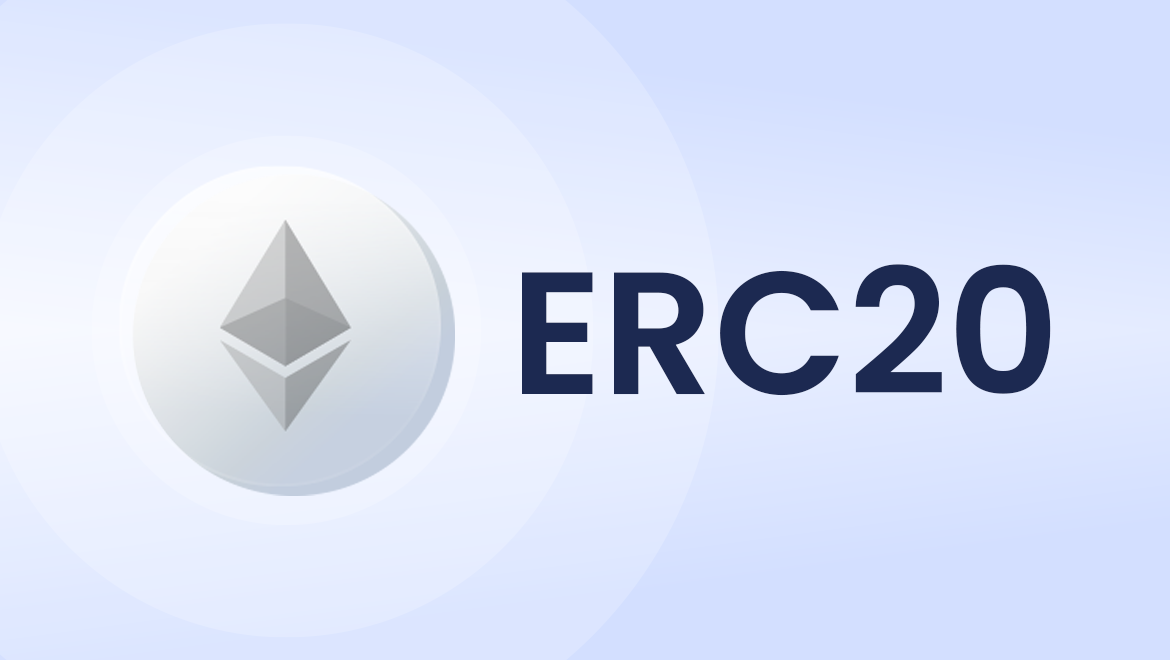ERC20 Token standard Basics: Beginner’s Guide
 Deactivated User
Deactivated User
The ERC-20 standard was created to expand the possibilities of solving the problem of compatibility of currencies based on the Ethereum blockchain with the network.
The creation of the Ethereum ecosystem made it possible to foresee a positive future for the development of cryptocurrencies and offered completely new opportunities for decentralization, such as the development of smart contract implementation along with decentralized services and initiatives. Using the ERC-20 standard, developers can create tokens on top of the Ethereum blockchain to standardize all tokens on the Ethereum distributed ledger and simplify the network.
In this article, we will talk about the ERC20 token development standard, its practical application and what tokens currently work based on this standard. At the end, we will analyze what are the fundamental differences between the ERC-20 and TRC-20 standards
What is the ERC-20 standard?
The Ethereum blockchain’s global standard for token creation is ERC-20. Previously, there were hundreds of tokens with different smart contracts and conditions. Developers of wallets and other applications had to write code from scratch to support a particular currency. This made the development of new cryptocurrencies and the ecosystem difficult. The ERC-20 standard defines a set of rules that must be met for a token to be accepted and able to interact with other tokens on the network.
ERC-20 stands for Ethereum Request For Comments. The number 20 is an identifier that allows this particular standard to stand out from all the others. The ERC20 token standard is a certain set of rules aimed at token developers, not just any token, but those based on the Ethereum blockchain. At the same time, the ERC-20 name is assigned to tokens running on the same blockchain. Its main difference from other tokens is the exclusive use of a strictly defined smart contract to track transactions made with this cryptocurrency.
It should be noted that this standard has several significant advantages that differentiate it from others.
- Security
The creation of new tokens increases the demand for Ether, which further strengthens the security of the entire system, making it less susceptible to a possible 51% attack;
- Saving time and resources
There is no need to develop a new blockchain for ERC-20 tokens as they can use the existing Ethereum infrastructure;
- Greater liquidity
Most projects use ERC-20 tokens as the basis of their operations.
- Compatibility
All tokens created on the Ethereum network are expected to share the same standard, which will facilitate their exchange and the integration of these tokens with other applications within the ecosystem.
What is the practical use of ERC-20?
In 2013, Vitalik Buterin proposed the concept of Ethereum, a fundamentally new cryptocurrency. By the end of 2015, the network was already fully operational. As part of the same project, Buterin developed ERC-20 in collaboration with Fabian Vogelsteller. In his statement, they stated that the cryptocurrency community needed a new format that would allow tokens to be created based on the Ethereum blockchain.
The new standard has brought many advantages to developers. Not having had to dedicate resources to solving security problems has allowed them to have these available. On the other hand, all Tether ERC20 cryptocurrency tokens are used by hardware wallets, and centralized exchanges, among others. Each of these software tools must maintain a specific protocol to function effectively.
There was interoperability between many Ethereum token formats before the adoption of create ERC20 token standard. The tokens were governed by a single smart contract. A new code snippet had to be written for each transaction and wallet to integrate the new token into the platform. The process of supporting an ever-growing set of tokens was becoming extremely slow and difficult. To do this, the platform provided a standard protocol, now called the ERC-20 protocol, for all the following tokens.
Which tokens have the ERC-20 standard?
By established technical standards, the ERC-20 standard has allowed cryptocurrency creators to simplify the entire transaction process. This principle ensures that all new currencies created are interchangeable while maintaining their specific purposes. The Ethereum community officially adopted ERC-20 in 2017. The majority of smart contract tokens on the Ethereum network follow the ERC-20 specification. These are just some examples.
- Uniswap (UNI)
Uniswap is the largest decentralized cryptocurrency exchange powered by the Ethereum ledger. Investors can use Uniswap to trade any ERC-20 token because it runs on Ethereum.
2. Maker (MKR)
Maker (MKR) is a decentralized protocol that allows stackable DAI to be issued against cryptocurrencies and real assets. MakerDAO uses smart contracts built on top of the Ethereum shared ledger. MakerDAO is an interesting space to borrow and lend without the need for traditional intermediaries like banks.
3. Chainlink (LINK)
Chainlink plays an important role in Ethereum’s distributed ledger. It allows data from the world of cryptocurrencies to be added to smart contracts. For example, if a smart contract depends on the valuation of a sports game or the value of a dollar, Chainlink can provide this data.
ERC-20 and TRC-20: What is the difference?
In 2018, USDT tokens on the Ethereum blockchain were issued under the ERC-20 standard. This was done to make it possible to use Tether in decentralized applications, as well as in various smart contracts. The issuance of tokens impacted the acceleration of the transaction process, as previously, all transactions taking place on the Bitcoin network were too slow and time-consuming for users. In 2019, USDT tokens were issued based on the TRC-20 standard on the Tron blockchain network. With a reduced network charge, Tron is a highly sought-after network. This procedure had a positive impact on the ecosystem and allowed it to take an important step towards development.
This means that there are no fees associated with transferring funds between different wallets, which is why many people prefer this method. The ERC20 token development service infrastructure is a decentralized network that allows the user to create, issue and exchange tokens. The network is based on Ethereum and provides a set of standard rules that all tokens must adhere to. This network is considered more reliable and widely used; It has more features, but for a simple USDT transfer, the TRC-20 network is still the most chosen.
Conclusion
Today, ERC-20 and TRC-20 networks are among the most popular for building all types of applications, as well as for transactions on the blockchain, which makes it possible to combine different solutions for the use of cryptographic technologies and implement new solutions. help increase blockchain networks’ potential in the future.. Despite their differences, these standards greatly contribute to the modernization of the Ethereum and Tron projects, helping them stay ahead of the competition.
Subscribe to my newsletter
Read articles from Deactivated User directly inside your inbox. Subscribe to the newsletter, and don't miss out.
Written by
